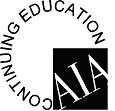Why Standards Matter AIA
HSW
Pamela Suett, B.S.
|
This
program is registered with the AIA/CES for continuing professional
education. As such, it does not include content that may
be deemed or construed to be an approval or endorsement
by the AIA of any material of construction or any method
or manner of handling, using, distributing, or dealing in
any material or product. Questions related to specific materials,
methods, and services will be addressed at the conclusion
of this presentation.
|
|
 |
PDH Online | PDH Center
5272 Meadow Estates Drive
Fairfax, VA 22030-6658
Phone & Fax: 703-988-0088
www.PDHonline.com
www.PDHcenter.com
An
AIA/CES Registered Continuing Education Provider (#J681)
|
|
Course Outline
This two-hour course
is designed as an introduction for management and technical personnel in business,
industry association management, government, and public policy; university faculty
and students; engineers, quality control and purchasing staff; consumers; and
those new to.comanizations that develop standards. This course consists of 6
lessons.
This course includes
a multiple-choice quiz at the end, which is designed to enhance the understanding
of the course materials.
Learning Objective
At
the conclusion of this course, the student will be able to:
- Identify what
a standard is;
- Recognize how
different.comanizations are involved in standards development;
- Recognize the
importance of standards in everyday life;
- Explain how
standards protect health, safety and the environment;
- Explain why
standards are developed;
- Identify the
difference between voluntary standards and regulations; and
- Recognize the
role of standards in U.S. business and the global marketplace.
Course Content
This
course consists of the following six lessons.
Lesson
1 - Course Overview
Lesson
2 - Standards in the World Around You
- Lesson Overview
- Suit Yourself?
- Standards for Clothing
- The Three Little
Pigs - Standards for Shelter
- Planes, Trains
and Automobiles - Standards for Transportation
- Don't Drink
the Water - Standards for Water
- Can You Hear
Me Now? - Standards for Communication
Lesson
3 - Standards Are Important
- Lesson Overview
- Missed Communication
- 9/11 and the World Trade Center
- Be Careful!
- Child Safety Standards
- Don't Blow Up
the Cook - New Gas Barbeque And Propane Tank Standards
- Spinning the
Web - Standards and the Internet
Lesson
4 - Standards Protect Our Health, Safety and Environment
- Lesson Overview
- You Are What
You Eat - Food Safety Standards
- Is the Doctor
In? - Standards for Medical Devices
- Environmental
Protection - Government/Industry Partnerships
- Where's the
Fire Exit? - Fire Safety Standards
Lesson
5 - The Business of Standards
- Lesson Overview
- It's Good Business
- Standards Promote Efficiency and Economy in Business
- Why All the
Parts Fit - Interchangeability
- The World is
Getting Smaller and Markets are Getting Bigger
- Lesson Review
- Self Assessment
Lesson
6- Course Wrap-Up
- Frequently Asked
Questions
- Glossary of
Terms
Lessons are in PDF
format. You need to open or download those documents to study this course.
Acknowledgement
This course is
a part of E-Learning Program offered by the American National Standards Institute
(ANSI). ANSI is a private, non-profit.comanization that administers and coordinates
the U.S. voluntary standardization and conformity assessment system. Its mission
is to enhance U.S. global competitiveness and the American quality of life by
promoting, facilitating, and safeguarding the integrity of the voluntary standardization
system. The Institute represents the interests of its company,.comanizational,
government, institutional and international members through its headquarters
in Washington, DC and its operations center in New York City.
The Education and
Training Department of ANSI in conjunction with the ANSI Committee on Education
developed this course. The following subject matter experts and ANSI staff were
contributors to this course:
Dr. William F.
Kelly, Professor, The Catholic University of America
Libby Parker, NIST
Dr. Steven Spivak, Professor, The University of Maryland
Diane Thompson, Thompson Consulting, Inc.
Once
you finish studying the
above course content,
you need to
take a quiz
to obtain the PDH credits.

DISCLAIMER: The materials
contained in the online course are not intended as a representation or warranty
on the part of PDH Center or any other person.comanization named herein. The materials
are for general information only. They are not a substitute for competent professional
advice. Application of this information to a specific project should be reviewed
by a registered architect and/or professional engineer/surveyor. Anyone making
use of the information set forth herein does so at their own risk and assumes
any and all resulting liability arising therefrom.